#cancer survivorship.
Explore tagged Tumblr posts
Text
youtube
#Perioperative analgesia#lung cancer#immune modulation#anesthesia techniques#surgical outcomes#cancer immunity#tumor progression#metastasis#opioids#regional anesthesia#epidural analgesia#nerve blocks#immune suppression#pain management#postoperative recovery#cancer surgery#patient outcomes#immunotherapy#anesthesia research#cancer survivorship.#Youtube
0 notes
Text
Summer is really fun for me because I go directly from “happy colorful fun lgbtq+ pride month!” to “My Cancer Survivor Angst Month”
#this is mainly a me thing to be fair#no I won’t shut up about my cancer experiences#coming up on four years since my diagnosis!#and I’m out here having fun and being myself#the most important part of surviving cancer is to have fun and be yourself#pride#pride month#lgbt#lgbt pride#lgbtq pride#lgbtqia#lgbtq#gay pride#ace pride#bi pride#asexual#ace#bi#biromantic#cancer#tw cancer#cancer tw#cancer survivor#cancer survival#cancer survivorship#breast cancer#breast cancer survivor#summer
37 notes
·
View notes
Text
KP could NOT have scripted THIS one! Well played Big G. Well played 👏
The good news I didn't know I needed: sometimes even our Great loving God is savage! #providence


Showing the RINOs how it's done! Today, after showing up & doing the most good, a little c was CELEBRATED while walking out of her big c.




youtube
When we can SEE that He prepares a table before us in the presence of our enemies, our cups run over with JOY!!


For the Montecito Royals In Name Only:

#Providence#world-of-wales gifs#God is savage!#celebrate good news#psalm 23#RINOs mad#kensington palace take note#catherine princess of wales#princess kate#princess catherine#the prince and princess of wales#catherine elizabeth middleton#kate middleton#cancer awareness#survivorship#survivor#Joy#all glory to God#less like scars
7 notes
·
View notes
Text
Adventure+
For the first time since last February, I went to the grocery store. Don't laugh.
On Superbowl Sunday, I shit enough blood to send me to the ER. I felt too weak and fatigued to shop. After my 10 day hospitalization in March, I was getting ready for treatment with imaging, a Powerport, labs, Mom's hospitalization/rehab then on to memory care.
Them I was too debilitated and immunocompromised to try.
Today, I went. The manager made me take a scooter cart because of my cane. A lovely young clerk got stuff off the high shelves for me. Losing an inch in height to chemoradiation and right shoulder mobility makes a difference. I filled up three grocery totes and came home, then got them all up the stairs.
To be fair, I threw the one with the TP, paper towels, aluminum foil, and parchment UP the stairs.
But I did it!
12 notes
·
View notes
Text
Cervical cancer
Cervical cancer is a type of cancer that develops in the cervix, which is the lower part of the uterus that connects to the vagina. It is the fourth most common cancer in women worldwide and can affect women of all ages. However, it is most often diagnosed in women between 35 and years of age.
Causes of cervical cancer:
The main cause of cervical cancer is infection with human papillomavirus (HPV), a sexually transmitted virus. There are more than 100 different types of HPV, and some types can cause cervical cancer. Other factors that can increase the risk of cervical cancer include smoking, a weakened immune system, a family history of cervical cancer, and multiple sexual partners.
Symptoms of cervical cancer:
Cervical cancer does not necessarily cause symptoms in its early stages. As the cancer progresses, symptoms may include abnormal vaginal bleeding, pelvic pain or discomfort, pain during intercourse, and unusual vaginal discharge. It is important to note that these symptoms can be caused by other diseases, so it is important to consult a doctor to get a proper diagnosis.
Prevention and early detection of cervical cancer:
The most effective way to prevent cervical cancer is the HPV vaccine. The HPV vaccine protects against the types of HPV that cause most cases of cervical cancer, as well as against other types of HPV that can cause other types of cancer. The vaccine is recommended for males and females between 9 and 26 years of age.
Regular cervical cancer screening is also important for early detection. A Pap test is a test that checks for abnormal cells on the cervix. It is recommended that women start regular Pap tests from the age of 21. In addition, the new HPV test can also detect the presence of the virus that causes cervical cancer. Women should discuss with their healthcare provider which exams are right for them.
Treatment of cervical cancer:
Treatment of cervical cancer depends on the stage of the cancer and other factors such as the woman's age and general health. Treatment options may include surgery, radiation therapy, chemotherapy, or a combination of these treatments.
In summary, cervical cancer is a common female cancer that can be prevented by vaccination and detected early by regular screening. Women should consult with their health care provider to determine appropriate screening and vaccination. If cervical cancer is diagnosed, early treatment can lead to a better outcome.
For more information Visit: www.oncorelief.in
#Cervical cancer#Women's health#Cancer prevention#Cancer screening#HPV vaccine#Pap test#HPV test#Cancer treatment#Early detection#Health education#Gynecologic oncology#Oncology nursing#Reproductive health#Sexually transmitted infections#Public health#Medical research#Health advocacy#Patient support#Survivorship
4 notes
·
View notes
Text
It is so interesting and weird having such a complicated relationship to cancer and the center I was treated at.
I had to go in today to get my port flushed since I am holding onto it until my next PET scan that'll hopefully come back clean. When I was walking up to the building I felt an overwhelming sadness and dread. Everything that this building symbolized flooded back to me. The sickness, the fear, the mortality, the anxiety. I hated it.
But when I walked into the infusion room and was greeted by one of the nurses who treated me last year with a "Hello, Mr. [my last name]" along with another nurse I grew to knew giving me a wave, I was hit with almost a warmth. And when I sat down in a section separate from the other cancer patients, I felt a bit lonely and longing. Like I lost
I am still terrified of relapse. I know I am still dealing with complications from treatment and either that or the cancer itself can still end my life prematurely. But when I was being treated, there was a simplicity that I honestly envy now. I just needed to get through treatment. Survive. I could make friends with the nurses and crack jokes and appreciate the small interactions between patients and their loved ones and relax for a bit, even if the poison in my body forced that last part.
But now just surviving is not enough.
I have to get a job. I have to plan ahead. I have to find my own communities. I have to establish myself. I have to create routines. I have to deal with the aftereffects. I have to cope with the fear. I have to move forward. I have to be a person.
I have to live.
And that is a much, much heavier demand.
0 notes
Text
The Impact of Breast Cancer Survivorship Programs
Breast cancer survivorship programs play a crucial role in supporting individuals beyond their initial diagnosis and treatment. These programs offer comprehensive resources and services tailored to address the unique needs of survivors, including physical rehabilitation, emotional support, and educational initiatives. By providing access to holistic care and fostering a sense of community among survivors, these programs empower individuals to navigate the challenges of life after cancer with resilience and hope. From wellness workshops to peer support groups, they offer a safe space for survivors to share experiences, gain practical skills, and find solace in knowing they are not alone. Ultimately, breast cancer survivorship make a profound impact by promoting healing, enhancing quality of life, and facilitating the journey towards long-term physical, emotional, and spiritual well-being.
Breast Cancer Survivorship Programs
Explore the role of breast cancer survivorship program in supporting individuals post-treatment, offering keywords such as survivorship and breast cancer to highlight their importance in helping survivors navigate life beyond diagnosis and treatment.
How Breast Cancer Survivorship Programs Foster Strength?
Delve into how breast cancer survivorship programs utilize keywords like empowering and resilience to emphasize their role in helping survivors build emotional and physical strength to thrive in survivorship.
The Importance of Community in Cancer Survivorship Programs
Discover how cancer survivorship programs emphasize keywords such as community and connection to highlight their role in providing a supportive network of individuals who understand the survivorship journey firsthand.
Comprehensive Support Offered by Breast Cancer Survivorship Programs
Explore how cance survivorship programs use keywords like concerns and support to showcase their comprehensive approach to addressing survivors' physical, emotional, and practical needs post-treatment.
Wellness Components of Cancer Survivorship Programs
Learn about the holistic approach of cancer survivorship programs, incorporating keywords like holistic and wellness to highlight their focus on promoting overall well-being through activities such as yoga, nutrition counseling, and mindfulness practices.
Educational Resources in Breast Cancer Survivorship Programs
Discover how breast cancer survivorship programs provide educational resources, utilizing keywords like navigating and life beyond cancer to empower survivors with knowledge about survivorship care plans, long-term side effects, and wellness strategies.
Practical Support Offered by Breast Cancer Survivorship Programs
Explore the practical assistance provided by breast cancer survivorship using keywords like empowering and transition to highlight their role in helping survivors navigate issues such as employment concerns, financial challenges, and healthcare transitions post-treatment.
Conclusion
In conclusion, breast cancer survivorshipserve as invaluable lifelines for individuals navigating life after treatment. Through fostering supportive communities, providing educational resources, promoting holistic wellness, offering mental health support, and delivering practical guidance, these programs empower survivors to reclaim their lives with confidence and resilience. By celebrating survivor milestones, advocating for survivor rights, and amplifying survivor voices, they play a crucial role in driving positive change in breast cancer care and survivorship. As survivors continue their journey beyond diagnosis and treatment, remain steadfast in their commitment to providing compassionate support, fostering healing, and championing the well-being of survivors every step of the way.
0 notes
Text
New Dawn for Cancer Survivors
BIACH&RI Launches ACT Clinic in Hyderabad In an era where medical advancements are saving more lives than ever, the Basavatarakam Indo American Cancer Hospital & Research Institute in Hyderabad has taken a significant leap forward. On International Childhood Cancer Day, February 15, 2024, the hospital launched the ACT (After Completion of Therapy) Clinic, a beacon of hope for cancer…

View On WordPress
#ACT Clinic#Cancer Survivorship#featured#Health Management Post-Treatment.#Pediatric Oncology#Post-Cancer Care#sciencenews
0 notes
Text

When I smell diesel exhaust, I return to a bus station in Cuenca, Ecuador. I am 11, traveling with my mother. We are visiting my uncle, who was studying there at the time.
Whenever I smell diesel fumes, I am there. I can hear the people yelling out the bus's destinations, some just boys, perhaps the driver's son. And other voices are clamoring for space in the cacophony, selling everything from chicklets to newspapers.
It was a culture shock to the highest degree. Before going on the trip, I went to get my passport. I had to take the morning off from school. The lady who was processing it asked where I was going. Because I was wearing my school uniform, I said, "I'm going to school." I thought she meant where I was going after the appointment.
That's how innocent I was before the trip.
Things change you.
I saw more poverty in a square mile than I could understand and was then led through an open-air meat market. The smell of diesel fumes mixed with the sight of limbs and heads of various animals while still trying to adjust to roughly 8,000' above sea level made me want to get sick, but I didn't. At that young age, a strange and unhinged understanding came over me. If I vomited, I would feel guilty because my stomach was full, and some of the children I had seen looked like they hadn't eaten in days.
Diesel exhaust will never be diesel exhaust; it will be a time machine.
When I see these clouds (attached photo / Facebook "memory" Jan 30, 2017), It isn't only that I step onto the cold deck and hear the wooden porch boards protesting against the frigid weather, but I hear my oncologist,
"...the lungs."
The day is frigid. It's the type of cold that you can taste before you can feel as if Mother Nature wants to give you a sampling of it before the entire course. (Mother Nature doesn't care about dietary restrictions.) I take this photo casually. It's a digital world; I can take dozens, but I remember taking only one.
If I had taken dozens, would I have dozens of different memories?
Unlike diesel fumes, there is nothing discernable about these clouds. They are generic, and they are fleeting. They are ephemeral.
"... the lungs."
I was going in for an early morning MRI and CT set of scans. I was six months post-treatment. These were routine. Routine is normal, is standard, is regular.
I wanted to remain on the deck, to stay and taste the day and watch these clouds shift and morph into... into anything.
"... the lungs."
Certain clouds are no longer clouds; they are time machines.
Events change you.
A few days after my scans, when I met with my oncologist, he said,
"... the lungs. It looks like one of the nodules has grown."
That was seven years ago.
Life changes you.
When I smell diesel, I am transported to another world.
When I see clouds like this, I become someone else, a pre-recurrence Jeremiah, a pre-transplant Jeremiah.
I have witnessed many cloud patterns like this since Jan 30, 2017. They constantly shift; some become rich blue, while others become threatening gray.
Their impermanence serves as a constant reminder of the transient nature of things.
#testicular cancer#cancer treatment#cancer survivor#jeremiah ray#cancer#stem cell tranplant#stem cell treatment#stem cell research#mass general hospital#zen#cancer survival#cancer survivorship
1 note
·
View note
Text
How does cancer arise, and how do you eliminate it?

Cancer, a complex and multifaceted group of diseases, arises from the uncontrolled growth and spread of abnormal cells. This process, known as carcinogenesis, involves a series of genetic mutations and alterations in normal cellular functions. Carcinogenesis is a dynamic and intricate process influenced by both genetic and environmental factors.
Genetic Mutations: Cancer often originates with mutations in the DNA of a single cell. These mutations can occur spontaneously, but exposure to carcinogens increases the risk. Carcinogens include substances like tobacco smoke, ultraviolet radiation, certain chemicals, and infectious agents. Mutations affect genes regulating cell growth, division, and repair, leading to the loss of normal control mechanisms.
Cellular Proliferation: As mutations accumulate, affected cells may undergo uncontrolled proliferation, forming a mass or tumor. Not all tumors are cancerous; benign tumors lack the ability to invade nearby tissues or spread, while malignant tumors can invade surrounding tissues and metastasize.
Angiogenesis: To sustain their rapid growth, cancer cells induce angiogenesis, the formation of new blood vessels. This ensures a continuous supply of nutrients and oxygen to support the expanding tumor.
Invasion and Metastasis: Malignant cancer cells invade nearby tissues, compromising organ function. They can also enter the bloodstream or lymphatic system, facilitating spread to other body parts. Metastasis is a critical stage, often making treatment more challenging.
Eliminating Cancer:
Efforts to eliminate cancer involve comprehensive strategies and collaborations, with organizations playing a vital role:
Cancer Organizations: Organizations like the National Coalition for Cancer Survivorship (NCCS) are dedicated to empowering cancer survivors, advocating for quality cancer care, and promoting policies that support patients. These organizations provide resources, support networks, and educational initiatives to enhance awareness and access to care.
Improving Survival Cancer Care: The focus on improving cancer care extends to initiatives addressing early detection, treatment advancements, and supportive care measures. Research-driven efforts explore innovative therapies, personalized medicine, and breakthrough technologies.
National Coalition for Cancer Survivorship (NCCS): NCCS, as a patient advocacy organization, works towards ensuring that cancer survivors receive high-quality, patient-centered care. They advocate for policies that prioritize survivorship, emphasizing the importance of the patient's voice in decision-making processes.
Eliminating cancer involves a multifaceted approach:
Prevention and Early Detection: Public health campaigns, lifestyle modifications, and regular screenings aim to prevent or detect cancer at earlier, more treatable stages.
Treatment Modalities: Surgery, chemotherapy, radiation therapy, immunotherapy, targeted therapy, and hormone therapy are among the diverse treatment options. The choice depends on factors such as cancer type, stage, and patient health.
Research and Innovation: Ongoing research efforts explore new treatments, technologies, and therapeutic strategies. Advancements in precision medicine and targeted therapies hold promise for more effective and less invasive treatments.
Patient Support and Advocacy: Organizations like NCCS provide support networks, resources, and advocate for policies that improve the overall cancer care experience, emphasizing survivorship and quality of life.
In conclusion, the battle against cancer requires a coordinated effort involving individuals, healthcare professionals, researchers, and advocacy organizations. By combining prevention, early detection, innovative treatments, and patient-centered care, progress is made toward eliminating the impact of cancer on individuals and communities. Organizations like the National Coalition for Cancer Survivorship contribute significantly to this collective effort, ensuring that the voices and needs of cancer survivors are central to the ongoing fight against cancer.
To know more visit: https://canceradvocacy.org/
#cancercare#survivorshipcareplan#canceradvocacy#cancer organizations#National Coalition for Cancer Survivorship
0 notes
Text
YAY!
Let's all go gray in May!


May: Brain Cancer Awareness Month
The most common symptoms of brain cancer are:
Headaches
Seizures
Difficulty thinking/speaking
Personality changes
Tingling/Stiffness on one side of the body
Loss of balance
Vision changes
Memory loss
Nausea
Disorientation
Muscle weakness
Anxiety/Depression
These are not all the symptoms of brain cancer, and brain cancer is NOT the only cause of these symptoms. If you suddenly or frequently experience any of these, go to your doctor so they can determine the cause.
[ID: An illustration of the side view of the human brain, with each lobe colored differently, with the most common symptoms arranged to follow the shape of the brain/lobes. The lobe-specific symptoms of brain cancer are in list formats outside the brain and correlate in color to the lobes. Frontal lobe: Personality changes, Increased aggression/irritation, Apathy, Weakness on one side of the body, Loss of smell, Difficulty walking, and Vision / Speech problems. Parietal lobe: Difficulty speaking/understanding, Problems reading/writing, and Loss of feeling in part of the body. Occipital lobe: Vision problems. Meninges: Headache, Nausea/vomiting, Sight problems, and Neck pain. Pituitary Gland: Lack of energy, Weight gain, Mood swings, High blood pressure, Diabetes, Enlarged hands/feet, Irregular/infrequent periods, and Infertility/impotence. Temporal lobe: Forgetting words, Short-term memory loss, and Seizures (often associated with strange smells/feelings). Brain Stem: Issues with coordination, Eyelid/mouth droops to one side, Difficulty swallowing, Difficulty speaking, and Double vision. Cerebellum: Issues with coordination, Uncontrolled eye movement, Nausea/vomiting, Neck stiffness, and Dizziness. Spinal Cord: Pain, Numbness, Weakness in legs/arms, Loss of bladder/bowel control, and Difficulty walking. End description.]
93 notes
·
View notes
Text
youtube
#financial toxicity#colorectal cancer#chemotherapy#patient experience#economic burden#healthcare costs#quality of life#cancer treatment expenses#emotional well-being#oncology care#cancer survivorship#out-of-pocket costs#healthcare affordability#financial stress#treatment decisions#cancer care reform#patient support#oncology research#healthcare access#economic impact#Youtube
0 notes
Text

As the sunlight filters in
Then your daily dread sets in
The cycle's beginning,
and in your head alarms are ringing
Something in you's fast asleep
Afraid to be who you will be
It's a losing battle,
so why are you still fighting?
-Counting Sheep by The Crane Wives
Image ID in ALT
#oh nagito my blorbo I’ll be thinking of you a lot this month#these lyrics kinda make me think of him#sir that’s my emotional support cancer patient character#also spreading my crane wives agenda#don’t worry there’s a happy sequel on the way!#nagito komaeda#komaeda nagito#sdr2 nagito#danganronpa nagito#danganronpa komaeda#danganronpa#danganronpa 2#sdr2#danganronpa sdr2#sdr2 komaeda#the crane wives#cancer#cancer survivor#cancer survivorship#counting sheep#angst#light angst#also did you know#that sometimes using a messier brush#and a smaller canvas#can make your art look better?
9 notes
·
View notes
Text
Post chemo things they don't tell you.
My hands are really painful this morning. Lots of inflammation in the wrists and knuckles. Tender joints. The neuropathy is fading in the tips of the pinkies, but the sensation of tightness and stiffness across the back of the palms continues. Maybe a paraffin dunk would help a little. I must be feeling better if I have the energy to consider it.
Chemotherapy, as they say, walks a fine line between killing the cancer and killing the patient. It reaches a peak a month or so after the final treatment. For the most part, those happy photos are a lie. Like any near death experience, you come out of it changed.
17 notes
·
View notes
Text

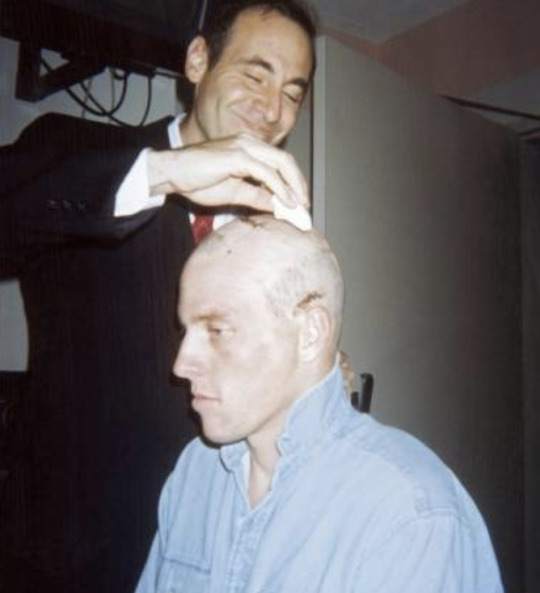

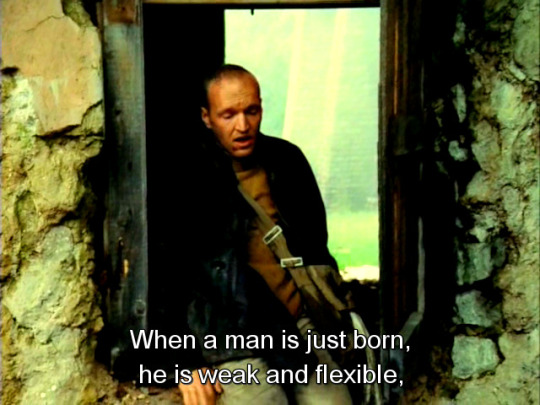
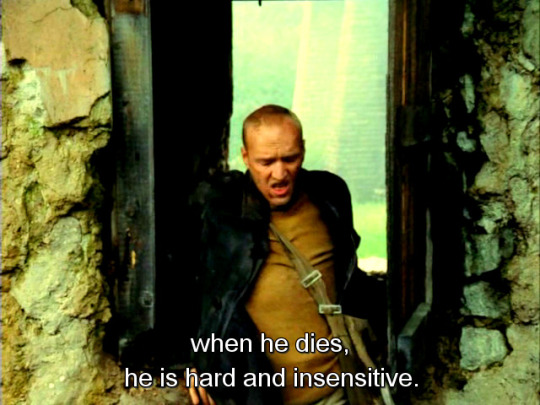
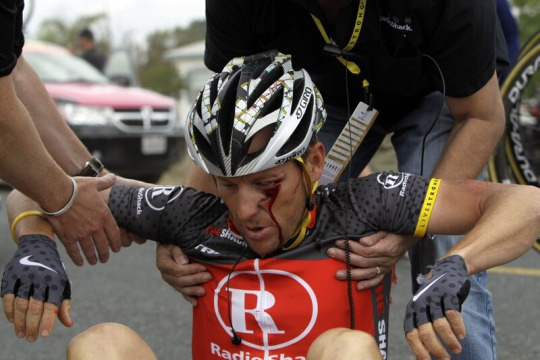
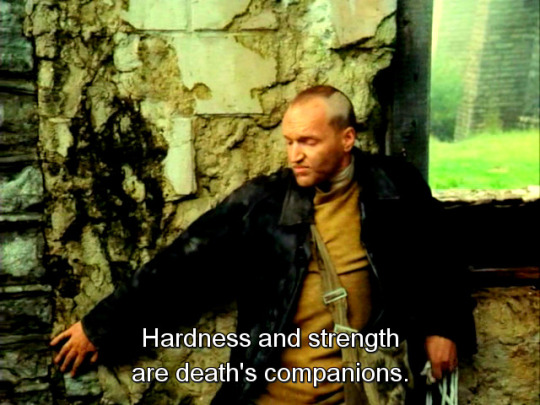
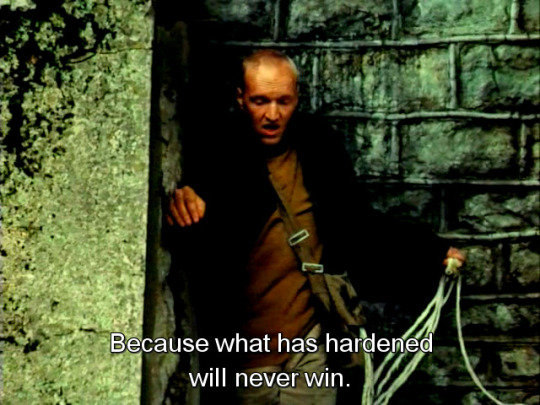

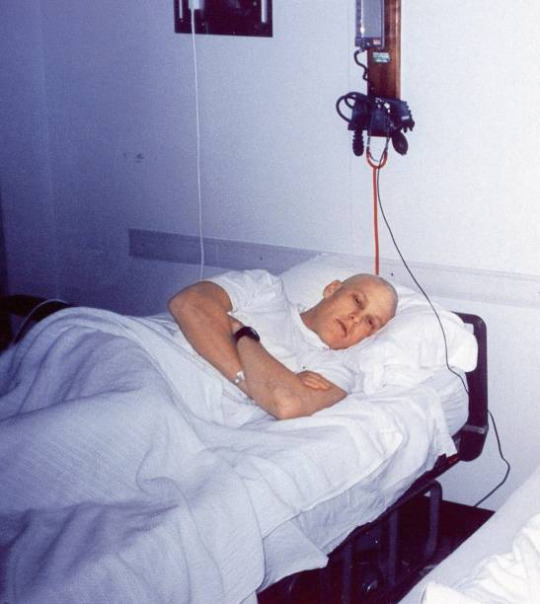
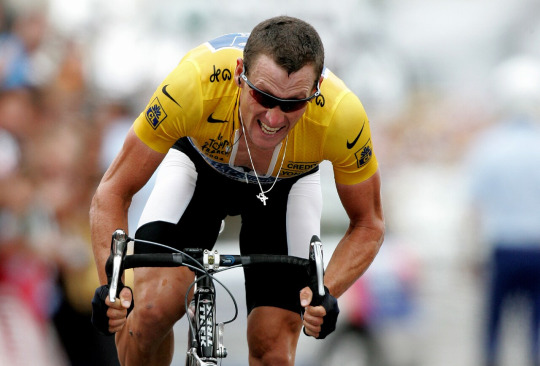

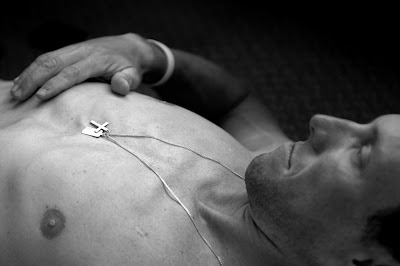
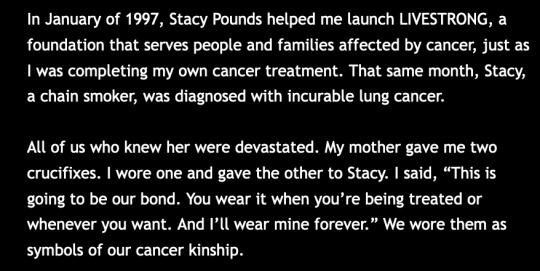

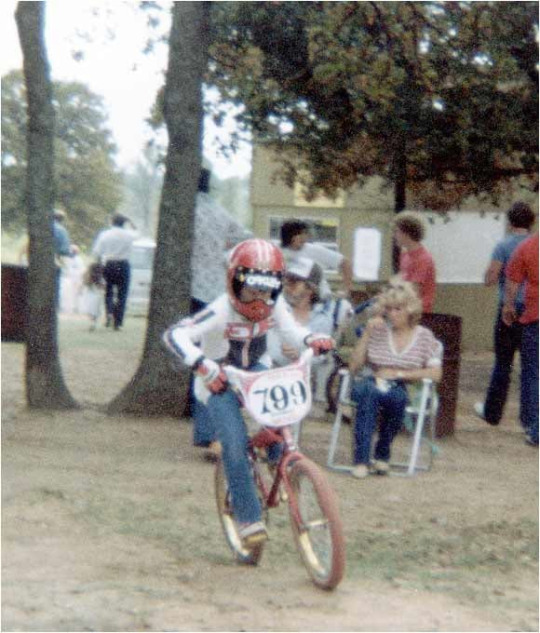

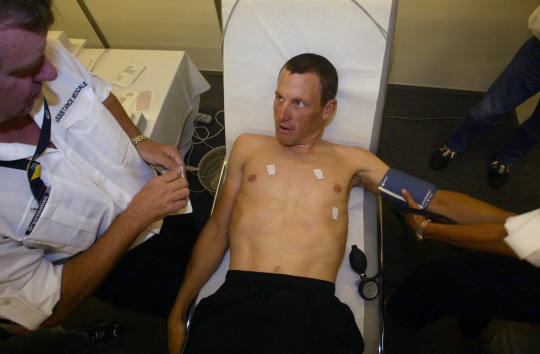
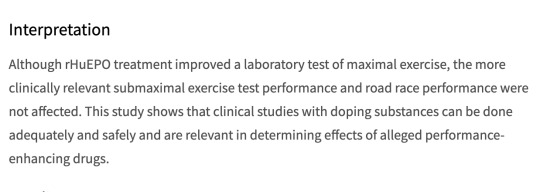



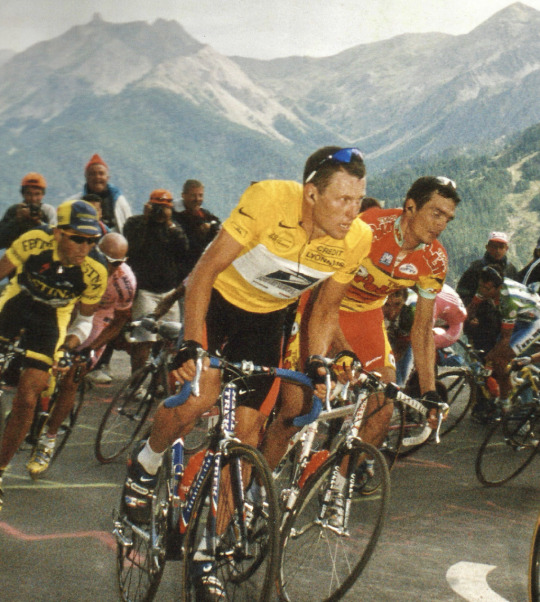

NO SHORTCUTS TO HEAVEN:
Or, Lance Armstrong buys himself a gun.
No Shortcuts to Heaven, Billy Graham, Decision Magazine (2005). // Lance Armstrong is treated for testicular cancer, Linda Armstrong Kelly (1996). // Psalm 138:6 ESV. // Stalker, Andrei Tarkovsky (1979). // Lance Armstrong crashes out of Stage 5 of the Amgen Tour of California, Associated Press (2010). // Recycling Religion: Lance Armstrong’s Postmodern Spirituality of Suffering and Survivorship, William J. F. Keenan (2014). // Lance Armstrong is treated for testicular cancer, Linda Armstrong Kelley (1996). // Lance Armstrong during the 91st edition of the Tour de France, Tim de Waele (2004). // Recycling Religion: Lance Armstrong’s Postmodern Spirituality of Suffering and Survivorship, William J. F. Keenan (2014). // For Stacy (photo and excerpt), Lance Armstrong, Recovox News (2010). // It's Not About the Bike, Lance Armstrong (1999). // Lance Armstrong in a youth BMX race ca. 1982, Linda Armstrong Kelly, Sports Illustrated (2013). // Lance Armstrong: It Wasn’t Legal but I Wouldn’t Change a Thing, Reuters (2019). // Lance Armstrong getting a medical check up before the Tour de France, Franck Fife (2003). // Effects of erythropoietin on cycling performance of well trained cyclists: a double-blind, randomised, placebo-controlled trial, Jules A. A. C. Heuberger et al., The Lancet (2017). // Crime and Punishment, Fyodor Dostoevsky (1866). // Luke 9:25 ESV. // Lance Armstrong at a victory procession for the Tour de France, Peter de Jong (2005). // Lance Armstrong climbing Alpe d'Huez, John Allen (2000). // It's Not About the Bike, Lance Armstrong (1999).
#sorry for the entire fucking works cited page#this is half baked. please see my vision.#lots of religious-related cycling webweave with that european catholic lense#well get ready for WASPy american christian agnosticism#and the dogmatization of ambition work ethic and rationality#lance armstrong#cycling#web weaving#mine
61 notes
·
View notes